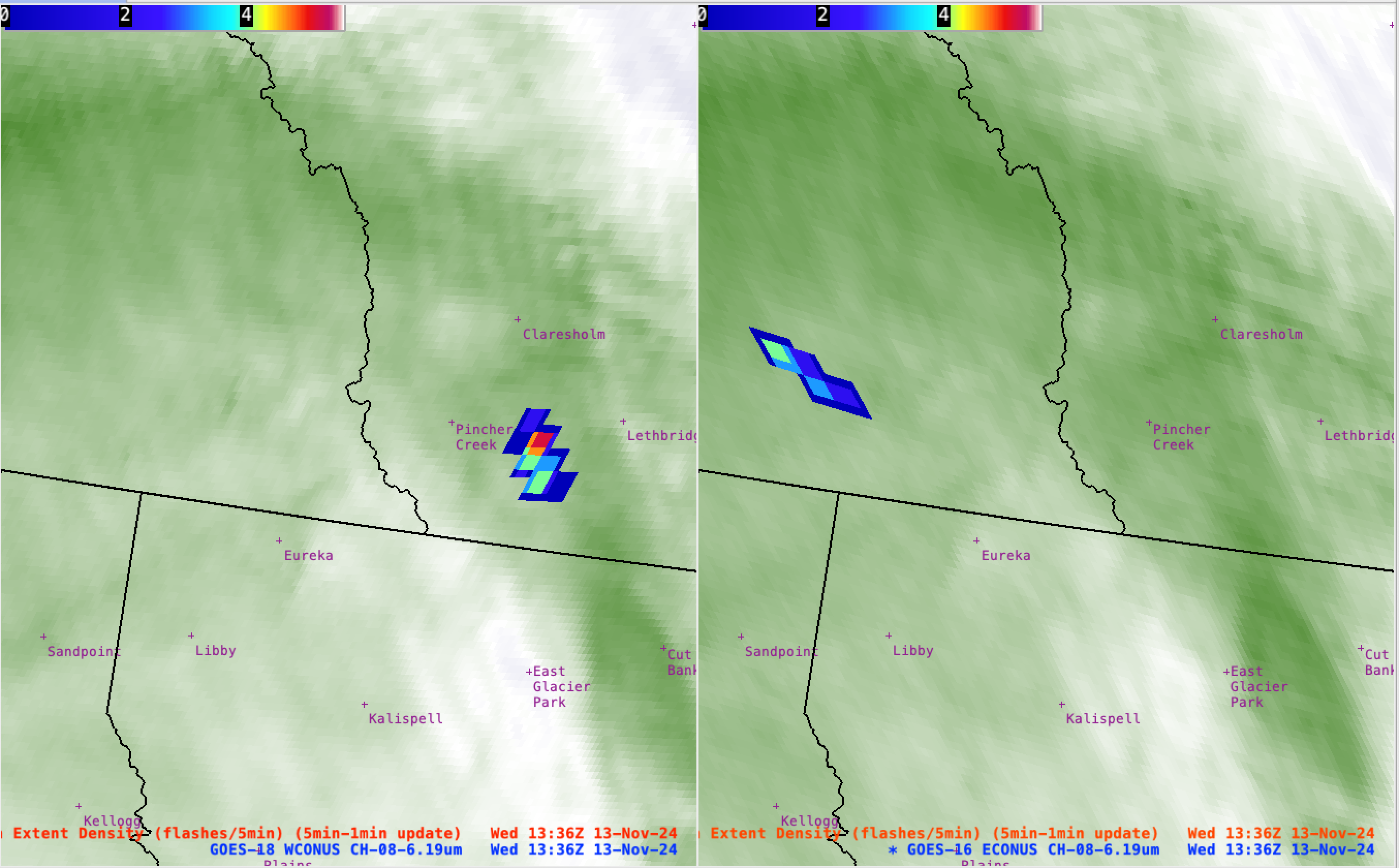Satellite signatures of a bolide over the Canada/US border

Upper-level Water Vapor (6.2 µm) images with an overlay of GLM Flash Extent Density, from GOES-18 (left) and GOES-16 (right), 1326-1346 UTC on 13th November [click to play animated GIF | MP4]
Since the bright fireball occurred at a high altitude (as a meteor was entering the Earth’s upper atmosphere), there was a notable parallax shift in the GLM-detected signatures (it should be noted that Level 3 GLM gridded products such as Flash Extent Density are not parallax-corrected) — with the apparent location over southwest Alberta as viewed from GOES-18, and over southeast British Columbia as viewed from GOES-16. With both satellites positioned over the Equator, a parallax-induced northward shift in apparent location would also need to be accounted for (GOES-18 parallax correction | GOES-16 parallax correction); this would bring the actual bolide location southward, to a point over far northwestern Montana (the blue fireball trajectory arrow pointing southeastward on the AMS map).
Satellite viewing angle also had a small effect on the GLM Flash Extent Density magnitude (1336 UTC image) — with a peak FED value of 6.0 observed by GOES-18, compared to 4.0 observed by GOES-16. Conversely, the peak Total Optical Energy values were 898.8 fJ observed by GOES-18 compared to 2241.7 fJ observed by GOES-16 (below).


